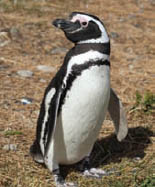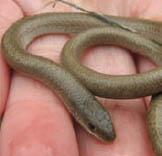



ANIMALS AROUND THE WORLD SUFFER, MAINLY BECAUSE of humans, and there are many ways to use your petting hand for something more meaningful. If you can grow a beard, you can save bears in Asia, supersize your love for felines in South America, and do it like Darwin in the Galapagos. Pick your favorite four-legger (two or none-legger also work), pack a squeaky toy, and get yourself in a furry situation.
YOU CAN BE ALL ABOUT THE yin and yang, but some weird shit goes into traditional Asian medicines. Dog meat is a common street treat, and drinking tiger penis brew is nothing new. Needless to say, it’s tough to be fuzzy in Asia. Moon bears have it especially rough. A critically endangered species, these teddies are housed in small cages and farmraised, then slaughtered for their stomach bile, which is thought to have some medicinal superpowers. Jill Robinson, a pissed-off animal lover, started the Animals Asia Foundation (AAF) in 1998 to help these bears (and other mistreated animals) by organizing interesting, fund-, and awareness-raising projects.
While their missions may be similar, AAF kicks PETA’s ass in the sense-of-humor department. In 2010, AAF rallied Hong Kong’s best buskers—a rag-tag bunch of the city’s jammiest street musicians—for an event called Buskers for Bears. In 2011, bear enthusiasts stretched it out at Yoga for Bears, and 2012 got a little hairy with the Beards for Bears campaign. The goal of all this madness was to raise money to get bears out of cages and into an AAF rehabilitation center.
Apparently, buskers and beards actually work for bears! Since 1998, AAF has signed agreements regarding the protection of moon bears with both the Chinese and Vietnamese governments; rescued 700 bears from an organ-farmed future; and aided in the closing of more than forty Chinese bear farms. As a way to keep everyone happy, the AAF gives the medicine man his due by providing cruelty-free alternatives for bile in traditional brews.

AAF has three major programs—End Bear Farming, Cat and Dog Welfare (to end cat and dog eating), and Action Against Cruelty. World headquarters are in Hong Kong, and there are Moon Bear Rescue Centers in Vietnam and China. AAF is always looking for self-motivated volunteers to organize fundraising events and street collections. While some animal-focused volunteer programs are more like a petting zoo, AAF continues to innovate their approaches to raising awareness for their causes. And you thought your beard was only good for storing bits of lunch until dinner.
THE WORLD HAS MUCH TO offer if you’re a bird nerd or just into checking out wildlife beyond the squirrels at your local park. Studying ecology abroad exposes you to indigenous species you may not find at home and places you in the cultural thick of it, allowing you to scope out ecosystems while you get to know the people who inhabit them, all while racking up credits.
Ecuador is home to the blue-footed booby, a bird with super-blue feet (but no Pamela Ds, unfortunately). Thanks to a partnership between Boston University and Universidad San Francisco de Quito in Ecuador, you can get credits toward your ecology degree while studying some of the world’s most coveted endemic species. This intensive, semester-long program offers students a chance to get their hands filthy in three completely different ecosystems—montane forest, tropical rainforest, and coastal habitats—while simultaneously learning Spanish. Not only do you get to study for four weeks in the Amazon, but they also hook you up with an eight-day trip to the Galapagos Islands, the animal inhabitants of which inspired a little theory you may have heard about. There, you can do like Darwin and witness the mating rituals of the waved albatross and make friends with all kinds of tortoises and iguanas.
The archipelago hangs out in the Indian Ocean on the Eastern coast of North Africa and is made up of Pemba Island and Zanzibar, along with a bunch of tiny little islets. While the islands are not as biodiverse as mainland Africa, the shrews, monkeys, mongooses, and colorful lizards here will still blow your mind. To give your animal escapades some structure, sign up for the SIT Study Abroad Program (Sit.edu). During the fifteen-week course, you get to shoot the shit in Swahili during one of two homestays on Pemba—where you can observe the rare, endemic Pemba fruit bats in action. Plan on setting aside some quality time with the red colobus monkeys during an excursion to the Jozani Forest, and then go snorkel crazy on the underwater wildlife off the islets of Bawe, Changuu, Misali, Mbudya, and Sinda. Once you resurface, don’t think you’re trippin’ balls when the boulders grow claws. The coconut crab is the largest arthropod in the world and crawls around these shores making other crabs look like bird food (and it also eats meat sometimes).
MAGELLANIC PENGUIN
Named after Magellan, these are the largest penguins in the world. Instead of the tuxedo getup, they sport a horseshoe pattern and shed their eye feathers during the warm months.

Endangered because . . . their fishy food supply is currently being threatened by overfishing, and they waddle into fishing nets and get covered in oil.
Still kickin’ it in . . . Argentina, Chile, Falkland Islands
COLOMBIAN WOOLLY MONKEY
Fuzzy and woolen, these monkeys use their incredibly strong tails to swing through the Amazon with ease. What have you done with your third limb lately?
Endangered because . . . fewer trees in the Amazon means fewer branches on which to swing in avoidance of predators—like jaguars, eagles, and humans—who snatch them up and sell them illegally as pets.
Still kickin’ it in . . . Colombia, Venezuela
SCHMIDT’S LAZY TOAD
The true embodiment of the toad, these frogs are terribly ugly, with warts dotting their bodies, long, lanky legs, and see-through underbellies. They mostly live on land, shamefully hiding under rocks until mating season, where they pop into the water for a quickie.
Endangered because . . . they’re actually pretty lazy (or rather, confined to a small area where they thrive). Since their habitat is so limited, and their numbers small, any change to their environment may wipe them out for good.
Still kickin’ it in . . . Southern and Central China
BLUE BUSTARD
Like an obese tenor, this bird has the voice of a frog and makes little croaking sounds to communicate with other bustards in the bunch.
Endangered because . . . the more we mow down their home turf, the less they can croak around freely.
Still kickin’ it in . . . South Africa, Lesotho
STRIPED LEGLESS LIZARD

If a lizard has no legs, isn’t it basically a snake? Science tells us that their evolutionary histories—snakes never had legs and legless lizards once did—distinguish them greatly.
Endangered because . . . their habitat is being invaded by two-leggers with tractors, and these lizards don’t like to slither on concrete.
Still kickin’ it in . . . Australia
THE SOUTH AMERICAN JUNgles conjure up images of jaguars lurking in trees and cougars feasting on deer carcasses. But if you take a trip to the Amazon jungle or Pantanal, you’ll have a tough time spotting them. They’re not just being big pussies—these animals have been hunted to near extinction in the past century. Conservation efforts have stabilized their numbers, but deforestation, overhunting of their natural prey, and killing by local farmers to protect livestock keep their future uncertain. Black market dealings also still happen—big cats are hunted for their fur, and moms are killed and babies kidnapped to sell as exotic pets. Here’s how to properly get your paws dirty to help these felines.
In the 1980s, a couple of Bolivian kids saw firsthand the devastation from unregulated deforestation. At the same time, they witnessed widespread animal abuse—from malnourished circus cats to monkeys forced to get drunk and dance for locals. What started as a pinky swear between friends to protect animals and the environment has turned into an internationally acclaimed environmental conservation effort and an animal rescue and rehabilitation center. Today, CIWY has three sanctuaries where volunteers can work directly with big cats—feeding, walking, and caring for them. This is the best cougar action you’ll find outside of a La Paz boliche.
The biggest and best big cat conservation effort in the world, Panthera is at the top of their kitty-saving game. Recently, when the government of Mongolia wanted to allow the hunting of some almost-extinct snow leopards for “research,” Panthera fought back Genghis-hard and got the proposal overturned. Their South American branch is based in Brazil’s Pantanal region, home to the largest concentration of jaguars in the world. Local farmers often shoot jaguars to protect their cattle herds, so Panthera is educating locals, observing jaguar behavior, and developing protected corridors and regions for the cats. They work on a wide scale with wild jaguars, so volunteer and work opportunities are more data collection, grant-writing, and necessary administrative duties than petting and taking pictures with jaguar kittens.
Volunteers love the big cats, and every animal shelter knows this. Some opportunists actually keep cats around solely to attract volunteers, and volunteer dollars, rather than rehabilitating and rereleasing them. Don’t get conned. Check various reviews online (not just the organization’s website), or find a listing of trustworthy programs—VolunteerSouthAmerica.net is a great place to start.